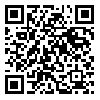1. 1. Chow J.Y, David's K, button C, Renshaw I, (2016). Nonlinear pedagogy in skill acquisition. 1st Ed Routledge. [
DOI:10.4324/9781315813042]
2. Abernethy B, Maxwell JP, Masters RSW, et al. Attentional processes in skill learning and expert performance. (2007), Handbook of sport psychology, 3rd ed. Hoboken, p. 245-63. [
DOI:10.1002/9781118270011.ch11]
3. Williams AM, Hodges NJ (2005) Practice, instruction and skill acquisition in soccer: Challenging tradition. Journal of Sports Sciences 23: 637-650. [
DOI:10.1080/02640410400021328]
4. Ranganathan, R, & Newell, KM. (2013), Changing Up the Routine: Intervention-Induced Variability in Motor Learning, Exercise Sport Science Review, 41, pp. 64-70. [
DOI:10.1097/JES.0b013e318259beb5]
5. David's K, Button C, Bennett S, editors (2008) Dynamics of skill acquisition: a constraints-led approach. 1st ed. USA: Human kinetics.
6. MARK L. LATASH (2008), synergy, Oxford University Press, New York. [
DOI:10.1093/acprof:oso/9780195333169.001.0001]
7. Chow JY, David's KW, Button C, Renshaw I, Shuttleworth R, Uehara LA (2009). Nonlinear pedagogy: implications for teaching games for understanding (TGfU). TGfU: Simply Good Pedagogy: Understanding a Complex Challenge. 1:131-43.
8. David's, K. Bennett, S. & Newell, K.M. (Eds). (2006). Movement system variability. Cham- Paign, IL: Human Kinetics. [
DOI:10.5040/9781492596851]
9. Latash, M.L. J.P. Scholz, and G. Schöner (2002). Motor control strategies revealed in the structure of motor variability. Exerc. Sport Sci. Rev. 30:26 -31. [
DOI:10.1097/00003677-200201000-00006]
10. Lee MCY, Chow JY, Komar J, Tan CWK, Button C (2014) Nonlinear Pedagogy: An Effective Approach to Cater for Individual Differences in Learning a Sports Skill. PLoS ONE 9(8) journal. Pone. [
DOI:10.1371/journal.pone.0104744]
11. Smith T.J, Henning R, Wade M.G, Fisher T, (2015) Variability in Human Performance. CRC Press is an imprint of Taylor & Francis Group. [
DOI:10.1201/b17319]
12. Edelman GM, Gally JA, (2001). Degeneracy and complexity in biological systems. Proceedings of the National Academy of Sciences. 98(24):13763-8. [
DOI:10.1073/pnas.231499798]
13. Tan CWK, Chow JY, David's K (2012) 'How does TGfU work?' examining the relationship between learning design in TGfU and a nonlinear pedagogy. Physical education and sport pedagogy 17: 331-348. [
DOI:10.1080/17408989.2011.582486]
14. Seifert L, Button C, Davids K, (2013). Key properties of expert movement systems in sport. Sports Medicine. 43(3):167-78. [
DOI:10.1007/s40279-012-0011-z]
15. Hong, S.L. & Newell, K.M. (2006b). Practice effects on local and global dynamics of the ski-simulator task. Experimental Brain Research, 169(3), 350-360. [
DOI:10.1007/s00221-005-0145-4]
16. Rein, R. Button, C. David's, K. & summers, J. (2010). Cluster analysis of movement patterns in multiarticular actions: A tutorial. Motor Control, 14(2), 211-239 [
DOI:10.1123/mcj.14.2.211]
17. Chow, J.Y. David's, K. Button, C. & Koh, M. (2008). Coordination changes in a discrete multi-articular action as a function of practice. Acta Psychological, 127(1), 163-176. [
DOI:10.1016/j.actpsy.2007.04.002]
18. Komar J, Chow J-Y, Chollet D, Seifert L (2014). Effect of analogy instructions with an internal focus on learning a complex motor skill. Journal of Applied Sport Psychology. 26(1):17-32. [
DOI:10.1080/10413200.2013.771386]
19. Komar J, Chow J-Y, Chollet D, Seifert L, (2015). Neurobiological degeneracy: Supporting stability, flexibility and pluripotentiality in complex motor skill. Acta psychological. 154:26-35. [
DOI:10.1016/j.actpsy.2014.11.002]
20. Lee MCY, Chow JY, Komar J, Tan CWK, Button C (2014) Nonlinear Pedagogy: An Effective Approach to Cater for Individual Differences in Learning a Sports Skill. PLoS ONE 9(8) journal. Pone. [
DOI:10.1371/journal.pone.0104744]
21. Rab G, Petuskey K, Bagley A, (2002). A method for determination of upper extremity kinematics. Gait & posture. 15(2):113-9. [
DOI:10.1016/S0966-6362(01)00155-2]
22. Thelen E, Smith LB, Karmiloff-Smith A, and Johnson MH (1994) a dynamic systems approach to the development of cognition and action: MIT Press.
23. Newell KM (1986). Constraints on the development of coordination. Motor development in children: Aspects of coordination and control. 34:341-60. [
DOI:10.1007/978-94-009-4460-2_19]
24. Chow JY, David's K, Button C, Renshaw I, Shuttleworth R, et al, editors (2009) Nonlinear Pedagogy: Implications for Teaching Games for Understanding. Ottawa, Canada: Physical Health Education Association.
25. Renshaw I (2010) a constraints-led perspective to understanding skill acquisition and game play: a basis for integration of motor learning theory and physical education praxis? Physical Education and Sport Pedagogy 15: 117-137. [
DOI:10.1080/17408980902791586]
26. Araújo D, Davids K (2011). Talent development: From possessing gifts to functional environmental interactions. Talent Development & Excellence. 3(1):23-5.
27. Zelaznik HN (2014). The past and future of motor learning and control: what is the proper level of description and analysis? [
DOI:10.1123/kr.2014-0035]








